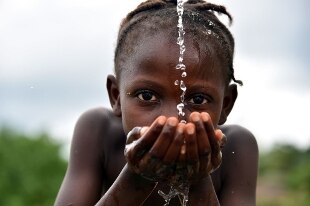Save the Children's alarm: every year 2 million children die from malnutrition
WHO, is a massacre of children for lack of vaccinations
Share
01 November 2021 UNICEF Director General Henrietta Fore goes straight to the heart of the situation: "COP26 must be the COP for children". "Climate change is one of the biggest threats this generation faces, with 1 billion children at the highest risk. Yet while the outlook is dire, world leaders at COP26 have a significant and timely opportunity to steer the terrible differently. They can do so by committing to strengthen the resilience of the services that children depend on, and by cutting emissions faster and deeper. The future of billions of children depends on it. "
The numbers of children at risk
According to UNICEF's report 'The Children's Climate Risk Index' (CCRI) nearly every child on earth is exposed to at least one climate and environmental risk, ranging from heat waves, cyclones, air pollution, floods and water shortages. About 1 billion children - half of the world's children - live in 33 countries classified in the Index as "extremely high risk". These children face a lethal combination of exposure to multiple climate and environmental shocks, which means lack of water and sanitation, health and education. An estimated 850 million children - over a third of all children - live in areas where at least four of the climate and environmental shocks overlap,and 330 million children live in areas affected by five major climate shocks.
Their future? Ordinary things like water
Children in countries that contribute the least to climate change suffer the most. The 33 very high risk countries collectively emit 9% of CO 2 emissions. The 10 highest risk countries together emit only 0.5% of global emissions. The future of children passes, according to the report, in services that can be defined as ordinary but which are not ordinary, that is, water, health and hygiene. Services that would reduce the risks for 415 million children. Climate-smart health services reduce risks for 460 million children. Resilient schools and education systems reduce risks for 275 million children, and climate-sensitive social safety nets reduce risks for 310 million children.
UNICEF requests to COP26
Scrolling through this list, UNICEF is present at COP26 to ensure that the climate crisis is recognized as a crisis for children and their rights, to promote approaches to decrease climate risk for those who are most vulnerable, and to support children's participation and youth at COP26 as part of efforts to support the participation of children and young people in climate decision making. Sudden climate change such as floods, droughts mean aggravating the health, nutrition, education, development, survival and future potential of children and young people. Compared to adults, children require more food, water and are also the ones most exposed to the spread of toxic chemicals and new diseases. See Covid.The future promises to be an uncertain navigation in which the current growth model that links economic development to environmental exploitation is no longer viable.
The role of COP26
Action at COP26 is fundamental.
UNICEF calls on governments to:
1) Increase investment in climate adaptation and resilience in key services for children.
2) Reduce greenhouse gas emissions.
3) Include young people in all climate negotiations and decisions.

